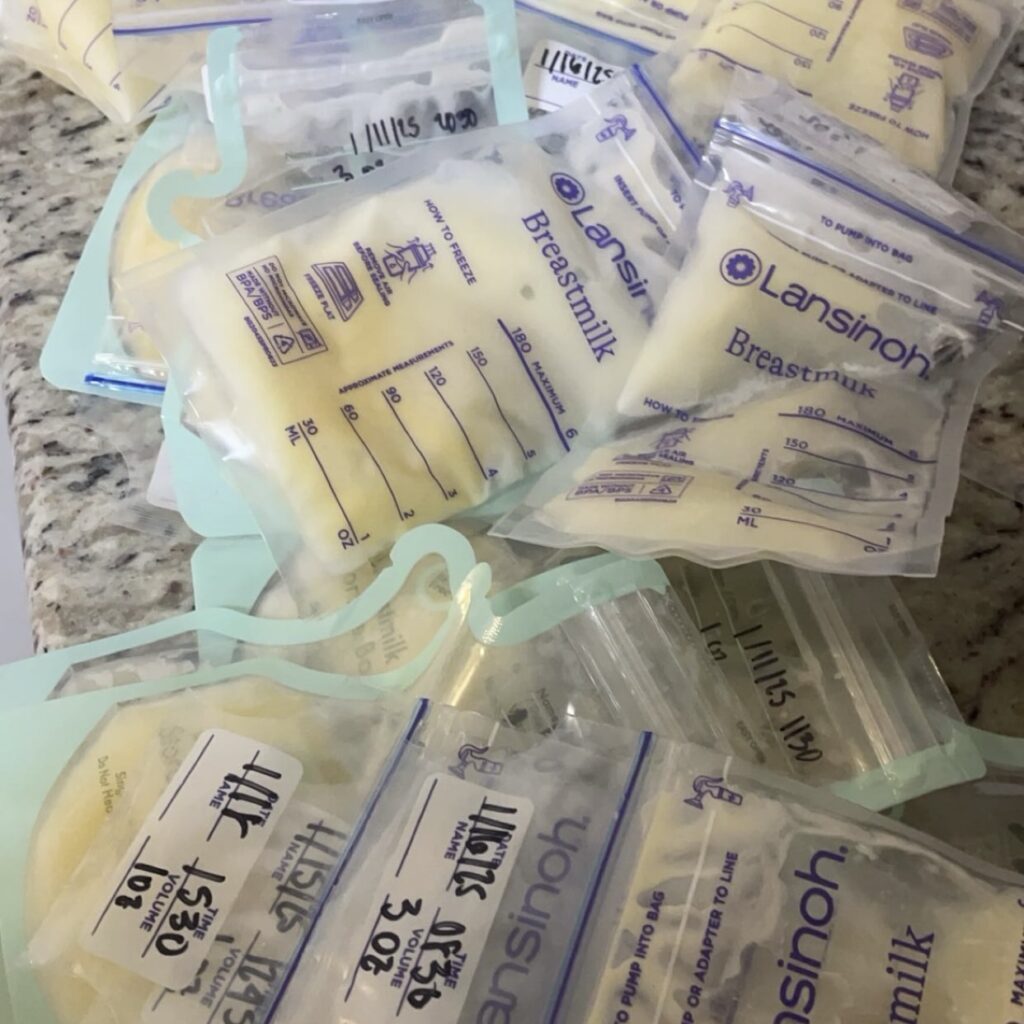
Like so many expecting mothers, breastfeeding was something I was really looking forward to doing with my baby. From before I even knew I was pregnant, I knew I would at least try to breastfeed my baby. Of course I wanted the bonding experience, but I was also simply fascinated by the fact that my body could provide the nutrients needed to sustain my baby after his birth.
My pregnancy ultimately did not go as planned and I found myself in a hospital bed at 26 weeks and 5 days being induced to give birth to my son knowing his heart had already stopped beating. In the folder I was given upon discharge from the hospital was information about postpartum, grief support, and milk coming in.
The human body is smart and complex, but the harsh truth is this: it cannot tell the difference between birthing a living baby and birthing a dead one. After a stillbirth, the hormones still do their job of producing milk. The resources from the hospital included instructions on how to “dry up” my milk, and conversely, information on breastmilk donation as well. I appreciated having options, but I was pretty set on drying up my milk as quickly as possible.
Before experiencing it myself, I wondered how I would know if my milk “came in.” Once it happened to me…I knew exactly what was going on with absolute certainty. It felt like my breast tissue had been replaced by bags of cement. For me, this happened a little over 24 hours after being discharged from the hospital (48 hours after delivering). I was painfully engorged and although I was desperately trying to ignore it, I needed relief. A few people had told me about breastmilk keepsake rings, and I liked the idea of wearing one. I made the decision to pump just enough to relieve the pain and to have a ring made.
Once I figured out how to actually work my breast pump and find the proper flange size, my pumping journey began. My memory of these days is admittedly a bit blurred, but I do remember being shocked when the milk started flowing. I had a great supply, especially for the gestation I delivered at. I am a NICU nurse, and in the NICU I work at, we use a ton of donor breast milk. I have seen firsthand countless premature babies grow and thrive on donor breastmilk. I felt guilty thinking about my milk going to waste knowing what my supply looked like. My initial pumping session was more successful than I imagined, and what was equally surprising was the way pumping made me feel.
In a time where I felt so angry with my body for being unable to keep my baby alive, pumping and seeing my milk supply made me feel like my body could do something right. Additionally, seeing the milk my body made and knowing it was meant to feed Nathan made me feel close to him. Pumping after a stillbirth is not the right thing for everyone. I was unsure if it was even right for me at first, but it was the only part of my postpartum experience that has felt normal and expected. Waking up in the middle of the night to pump never bothered me because I knew if I had a living baby at home with me, I would be waking up anyway. It just felt right.
Soon, my freezer was full. Although I had known for quite some time that I would eventually donate, parting ways with my milk felt like parting ways with my baby, even though in reality, I had already done that. Initially, I looked into donating through the hospital milk bank. This would mean my milk would go through a testing and pasteurization process before being distributed to neonatal intensive care units like where I work. Donating to the hospital milk bank meant having to go through a phone interview and get bloodwork done to ensure the milk was safe and followed the regulations set in place. Frankly, I was not in the right headspace for a phone interview and did not have the energy for more blood work. I took to social media to find someone I could donate to directly. The recipient of my donated breast milk ended up being a mother local to me. We were connected through my state’s Human Milk for Human Babies group on Facebook. She came to my house after work one day, and just like that, my milk was gone to help someone else’s baby. It was a bittersweet feeling.
Before you start to worry for me, I did save a syringe of milk to have my ring made and one ounce of frozen milk that I am emotionally attached to. After donating the initial “batch,” I made the decision to stop pumping. I will not write about how I dried up my milk because I did not do it properly or safely, just know that I did dry it up. In truth, I developed an unhealthy obsession with pumping. I was pumping way more often than I should have been and I was power pumping almost every single time. My theory is I was addicted to pumping because of how close it made me feel to Nathan. I was exhausting myself more than necessary and needed to put an end to it.
Pumping is both physically and mentally hard, but I will never regret pumping to donate after losing my son. If you are a breastfeeding/pumping mom with an oversupply, or if you find yourself in the same devastating position as me, consider looking into breast milk donation via a milk bank or direct donation. It is not for everyone (and that is okay), but it might be for you.

Link to milk bank information for North America: https://www.hmbana.org/find-a-milk-bank/overview.html
Link to my keepsake ring: https://rememberwithroberts.com/products/olivia